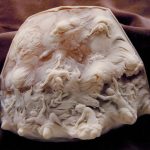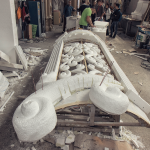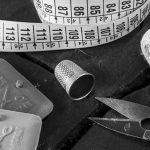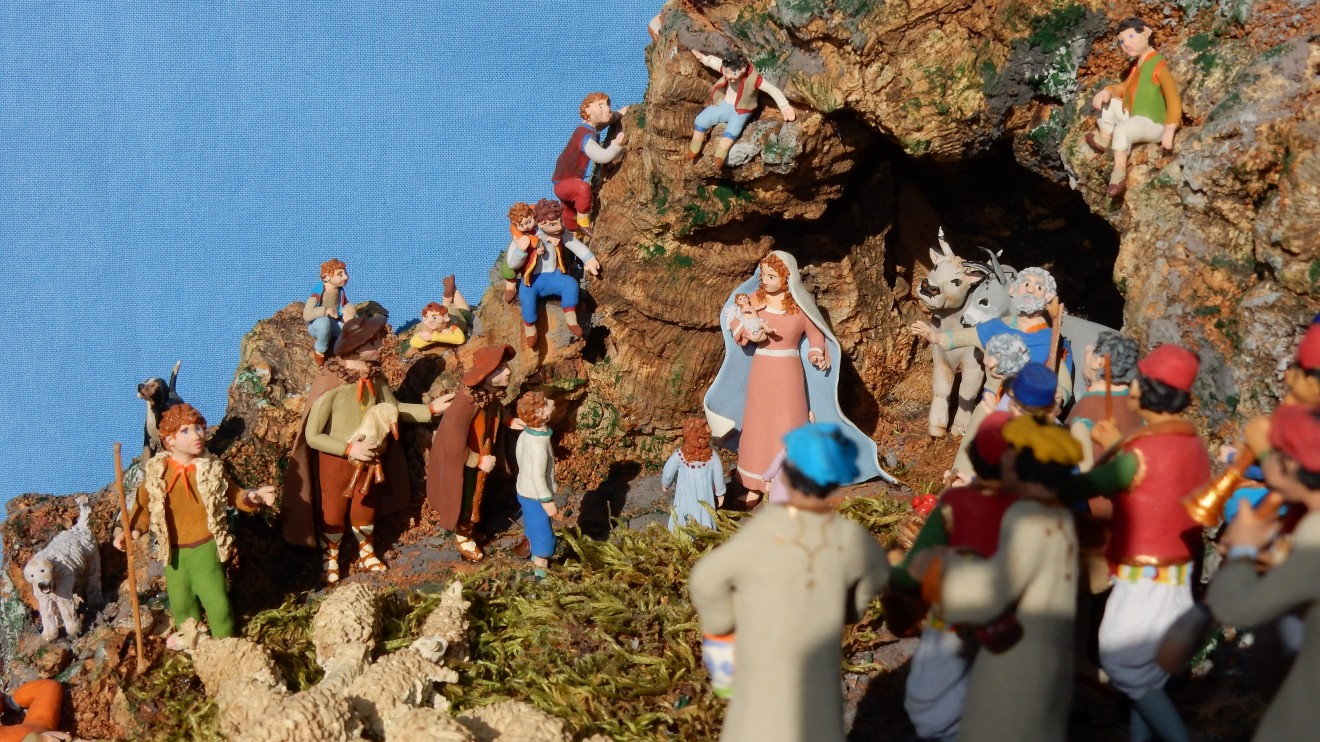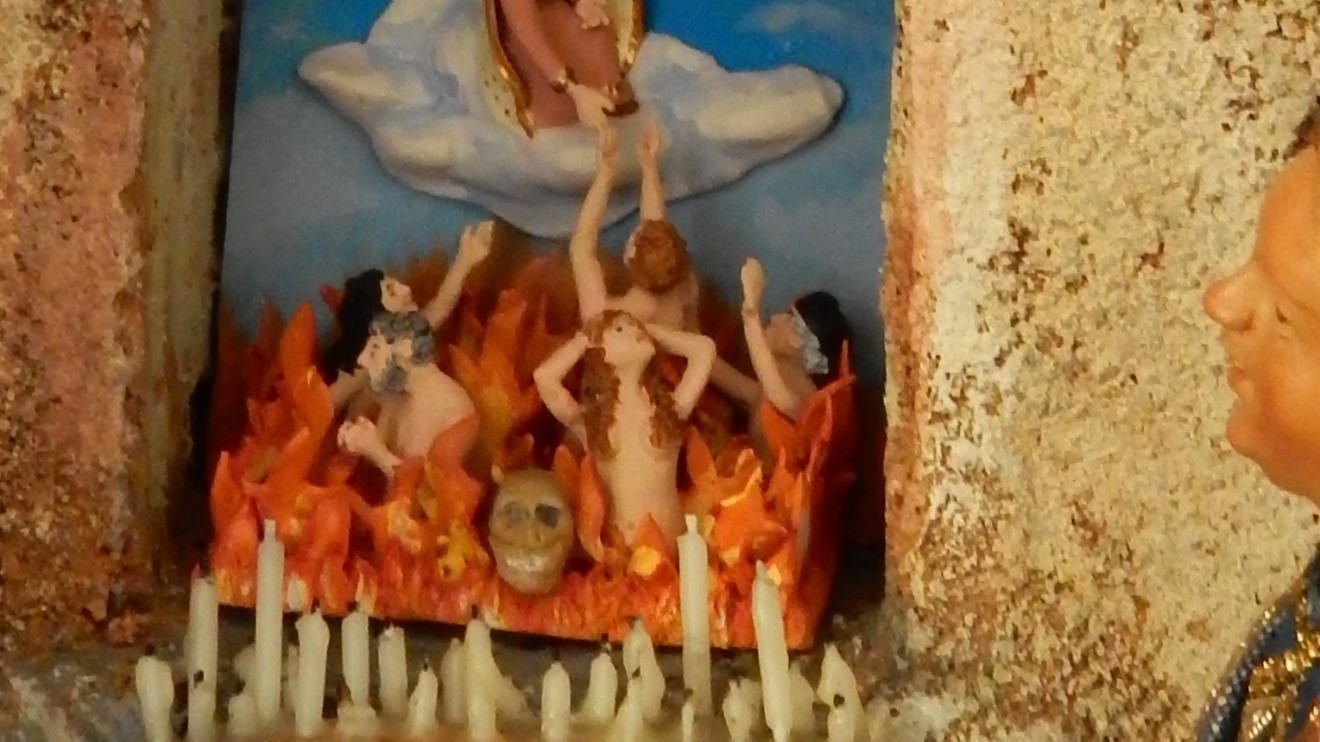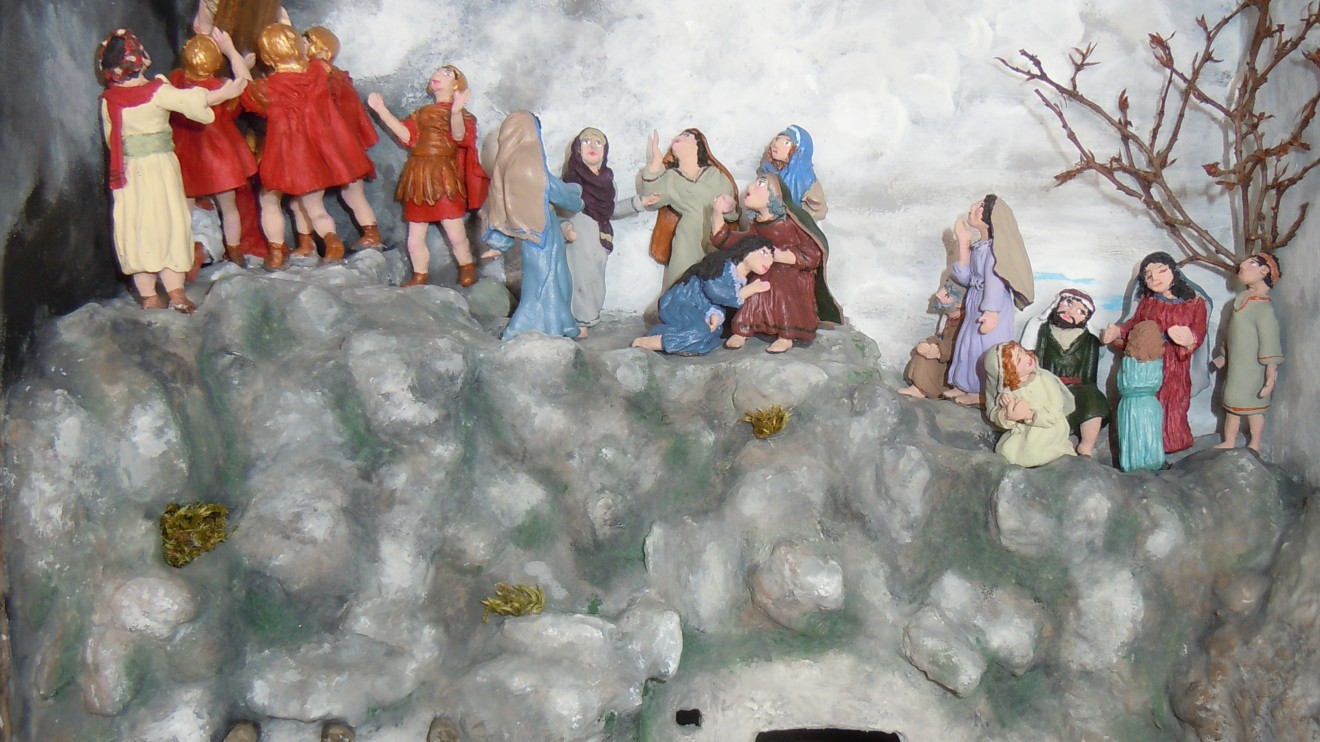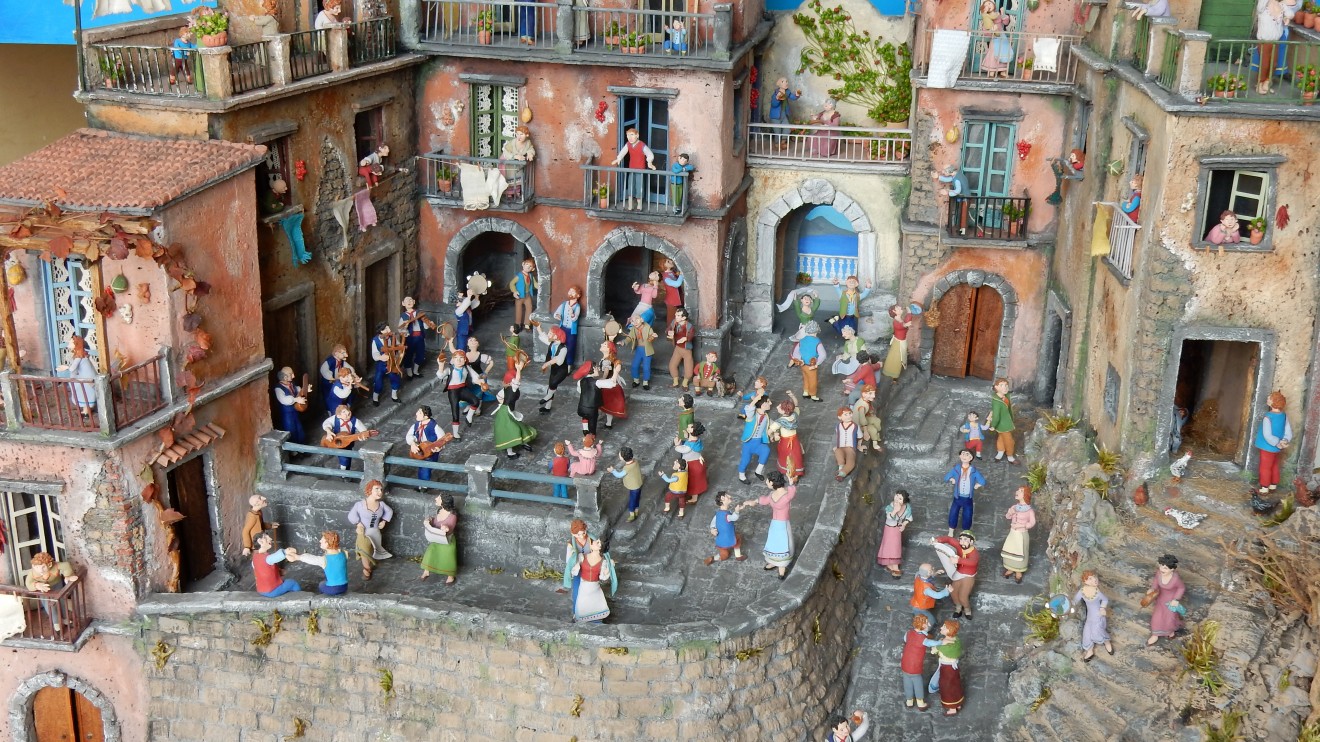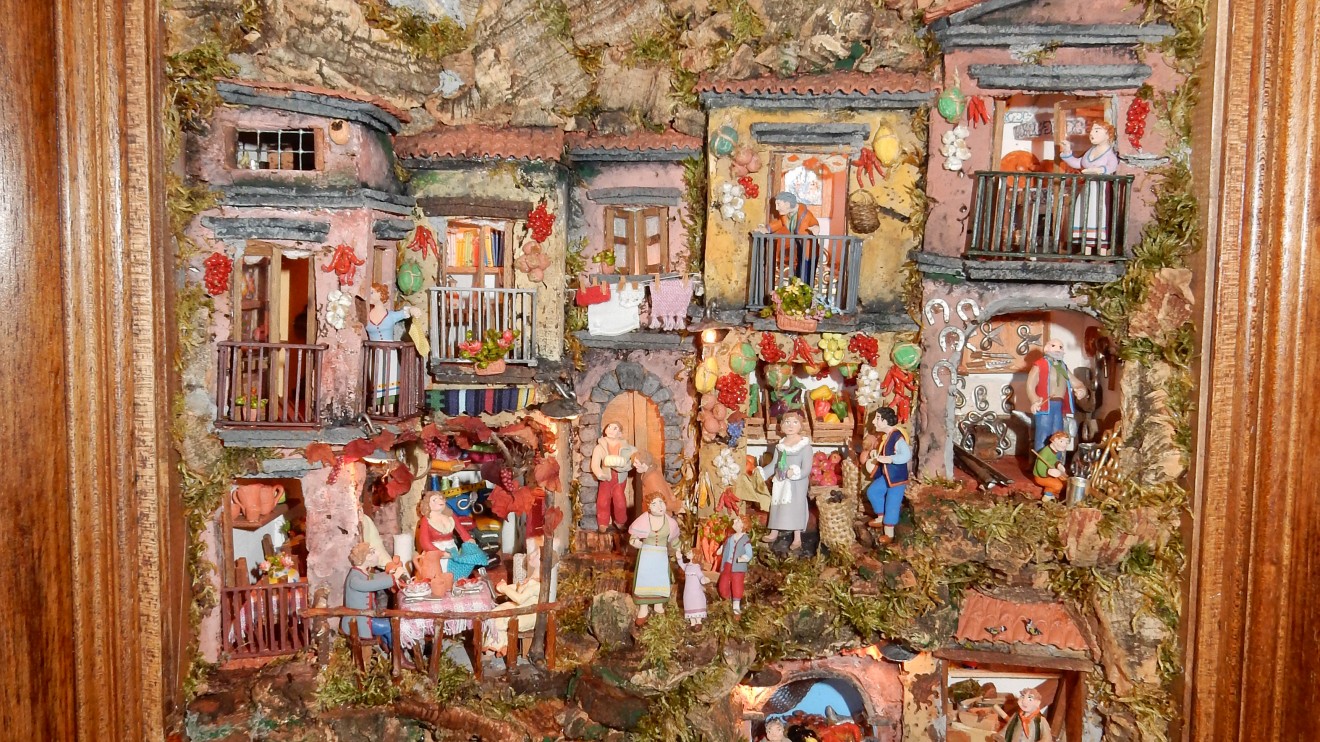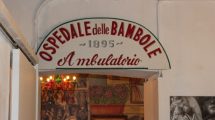In my family, we have never been short of nativity scenes. One of my great-grandfathers used to build huge nativity scenes, almost as big as a room; my grandfather on my mother’s side used to make nativity scenes with cork and clay characters (We had to keep our hands off!), while my grandfather from my father’s side would use paper mache and plastic characters (which we would constantly move around). Both styles fascinated me! Every year, my mom and dad designed and created together a nativity scene, and we, children, were happy to wait and see the final outcome.
Generations that hand down knowledge, techniques, truths and legends on the use of different materials, characters or scenes, that remember stories and gather around the final “installation”: this is the Neapolitan nativity scene family tradition, this is the beginning of the Franca Patriarca’s personal history (Naples, 10 Oct 1962).
Anyone with such an “initiation” to the nativity scene is almost obliged to carry on the tradition as a moral imperative, while adapting it to the new trends: “At the beginning, my husband and I were making disposable creations, but then we built one “island” to enrich year after year. After that, we decided to make gifts out of our nativity scenes, gifts that had to be typically Neapolitan, did not take up much space, could easily be part of a house or office decoration… so we invented the ‘nativity scene frame’, which immediately was a big success!”
Franca had been experimenting for three years, before meeting the AIAP (Italian Association of Nativity Scene Friends) in 2009. Then, she started refining her technique and rediscovering the historical and cultural aspects connected to Neapolitan Nativity Scenes.
Nowadays, Franca Patriarca builds nativity scenes “islands” in wood, cork and stucco (for characters that can be 1 to 35 cm tall) and tiny coloured clay characters (less than 5 cm tall) enriched by accessories in raffia, wood or clay called “moschelle” i.e. little flies. Her gift for both structures and shepherds allows her to give a personal touch to her creations: “At the beginning of my career I discovered by chance that I was able to mould the little statues while I was making the tile for the rood of a nativity in the Dome of Naples for AIAP. Today, my creations are elaborate, since I can produce detailed and original characters that can be tailored for a particular nativity scene.”
Nativity scene frames strike the observer for their vital force and the whole picture becomes alive with a multitude of colours and movements which communicate joy for the birth of “the saviour”.
Franca Patriarca is enthusiastic about her handicraft work: “Having an idea and making it happen is priceless! During the design phase I jot down lots of ideas that look like a total chaos, but they are crystal clear in my mind. Here a house, there a tree, in this point a dog or a donkey, over there a woman with children playing, the Holy Vergin in this pose… cork, stucco… I get utterly detached from the real world to immerge into the one I am about to shape”.
Franca has also taught some landscape and moulding courses for AIAP and for elementary school children: “I appreciated the children’s desire to build and mould their nativities and their curiosity about the tradition of Neapolitan Nativity scenes. Who knows, maybe one of these children will become an artist like me.”
Thanks to AIAP, Franca Patriarca has been able to participate in exhibitions, galleries and events all over Italy, but also in Europe and in the USA. In 2010, she received the first prize for the “best artistic nativity scene” from the “Rivista delle Nazioni” and two years later she was given a special prize.
“When I finish my creation, I am always puzzled that I succeeded! I create looking for emotions and if I am able to transfer them onto the observer, THEN my work is done!”
Generations that hand down knowledge, techniques, truths and legends on the use of different materials, characters or scenes, that remember stories and gather around the final “installation”: this is the Neapolitan nativity scene family tradition, this is the beginning of the Franca Patriarca’s personal history (Naples, 10 Oct 1962).
Anyone with such an “initiation” to the nativity scene is almost obliged to carry on the tradition as a moral imperative, while adapting it to the new trends: “At the beginning, my husband and I were making disposable creations, but then we built one “island” to enrich year after year. After that, we decided to make gifts out of our nativity scenes, gifts that had to be typically Neapolitan, did not take up much space, could easily be part of a house or office decoration… so we invented the ‘nativity scene frame’, which immediately was a big success!”
Franca had been experimenting for three years, before meeting the AIAP (Italian Association of Nativity Scene Friends) in 2009. Then, she started refining her technique and rediscovering the historical and cultural aspects connected to Neapolitan Nativity Scenes.
Nowadays, Franca Patriarca builds nativity scenes “islands” in wood, cork and stucco (for characters that can be 1 to 35 cm tall) and tiny coloured clay characters (less than 5 cm tall) enriched by accessories in raffia, wood or clay called “moschelle” i.e. little flies. Her gift for both structures and shepherds allows her to give a personal touch to her creations: “At the beginning of my career I discovered by chance that I was able to mould the little statues while I was making the tile for the rood of a nativity in the Dome of Naples for AIAP. Today, my creations are elaborate, since I can produce detailed and original characters that can be tailored for a particular nativity scene.”
Nativity scene frames strike the observer for their vital force and the whole picture becomes alive with a multitude of colours and movements which communicate joy for the birth of “the saviour”.
Franca Patriarca is enthusiastic about her handicraft work: “Having an idea and making it happen is priceless! During the design phase I jot down lots of ideas that look like a total chaos, but they are crystal clear in my mind. Here a house, there a tree, in this point a dog or a donkey, over there a woman with children playing, the Holy Vergin in this pose… cork, stucco… I get utterly detached from the real world to immerge into the one I am about to shape”.
Franca has also taught some landscape and moulding courses for AIAP and for elementary school children: “I appreciated the children’s desire to build and mould their nativities and their curiosity about the tradition of Neapolitan Nativity scenes. Who knows, maybe one of these children will become an artist like me.”
Thanks to AIAP, Franca Patriarca has been able to participate in exhibitions, galleries and events all over Italy, but also in Europe and in the USA. In 2010, she received the first prize for the “best artistic nativity scene” from the “Rivista delle Nazioni” and two years later she was given a special prize.
“When I finish my creation, I am always puzzled that I succeeded! I create looking for emotions and if I am able to transfer them onto the observer, THEN my work is done!”





